0. post-it note
1. eval models -> qwen wins
2. use qwen VL for first prompt
2.1. emacs + macros to reformat output
3. use llama4 scout for second text only prompt gen
3.1. emacs + macros to reformat output
4. llama stack playground - mcp::github agentic
eformat.me
Emerging Tech Experience (ETX AI), Vibe Coding, GenAI
Tags : ai, rhoai, openshift, llm, genai, llama-stack, emacs, agentic
“AI won’t take your job, but someone who understands AI will.” - Economist Richard Baldwin, 2023 World Economic Forum’s Growth Summit.
Vibe coding a GitHub project issues list using Red Hat Openshift AI, Agentic AI, MultiModal + MOE Models, MCP Tools in under 45 min.
Things To Do
It’s not often you spend an intensive week to just hack around. A nice break from the day job.
Here is the succint work flow:
Sticky notes
Given my past, sticky notes have taken over my life - very much like the scene in "The Fall Guy" - just google "sticky notes the fall guy" and watch that movie.
This was the INPUT for vibe coding, it is a backlog for things we wanted to work on after the hackathon.
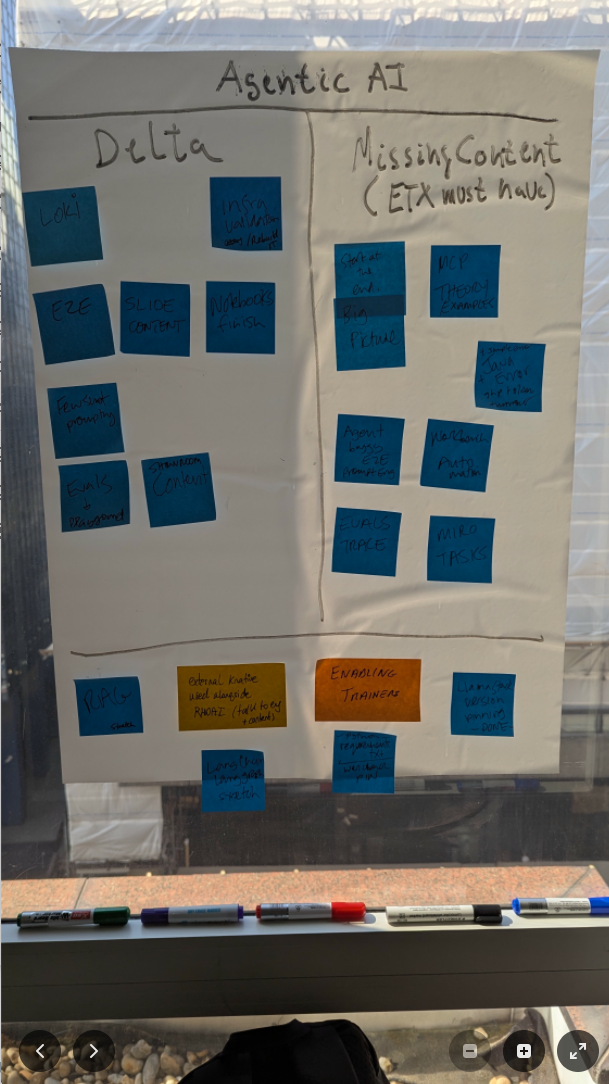
Multi Modal Chatbot
Next step - take the image and use the Red Hat Multi Modal Chatbot Demo to evaluate 3 models for Vision to Language:
-
Llama-4-Scout-17B-16E-W4A16
-
Granite-vision-3.2-2b
-
Qwen2.5-VL-7B-Instruct-FP8-Dynamic
Prompt: describe line by line each item.
Model: Qwen2.5-VL-7B-Instruct-FP8-Dynamic
Qwen wins for this step.
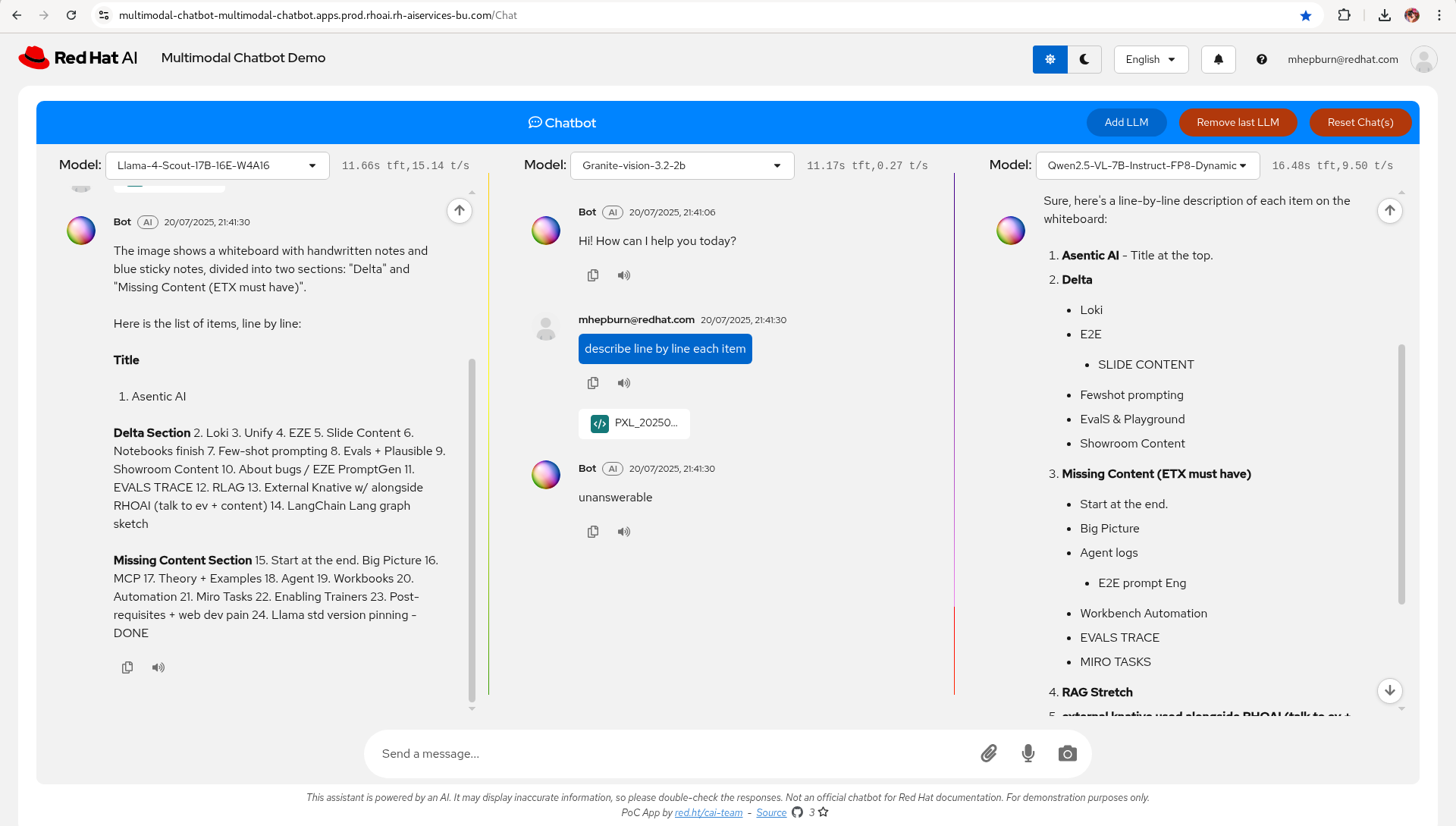
Generate Prompt for the mcp::github tool
Next step - take the list of tasks, apply emacs + macros to reformat and clean up and generate the prompts for the mcp::github tool.
Prompt: create one-shot prompts for each item in this list:
Model: Llama-4-Scout-17B-16E-W4A16
LLama-4-Scout wins for this step (and of course emacs macros 😂)
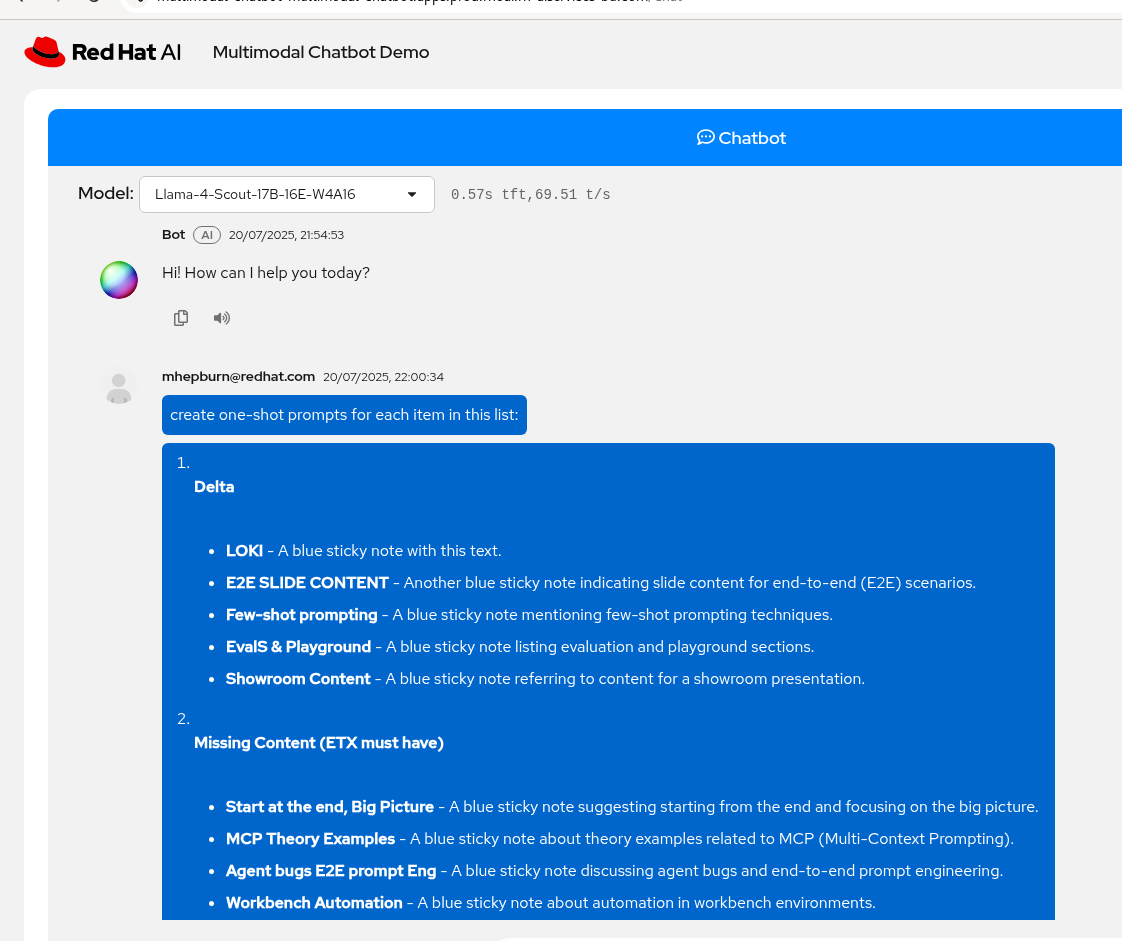
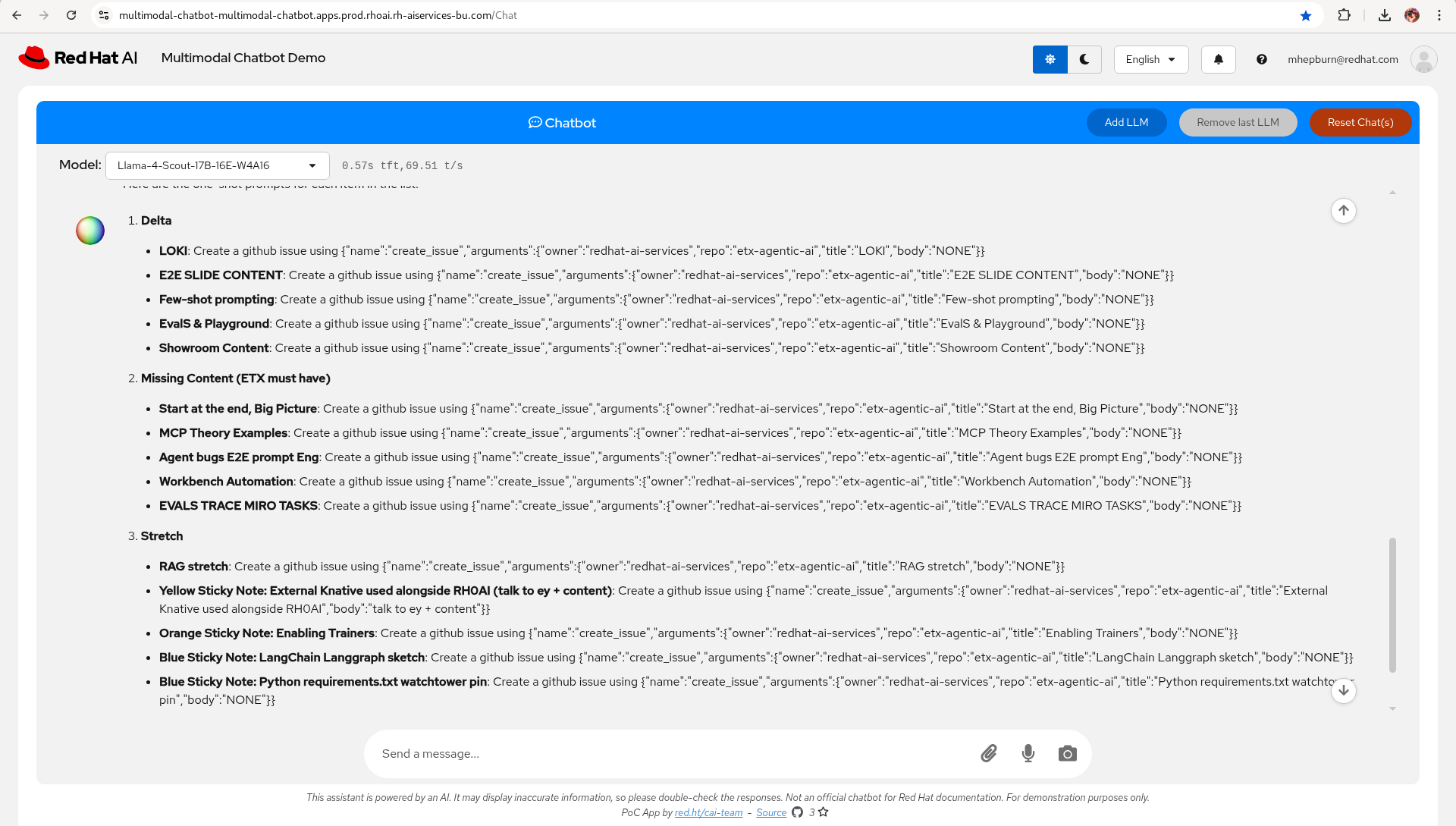
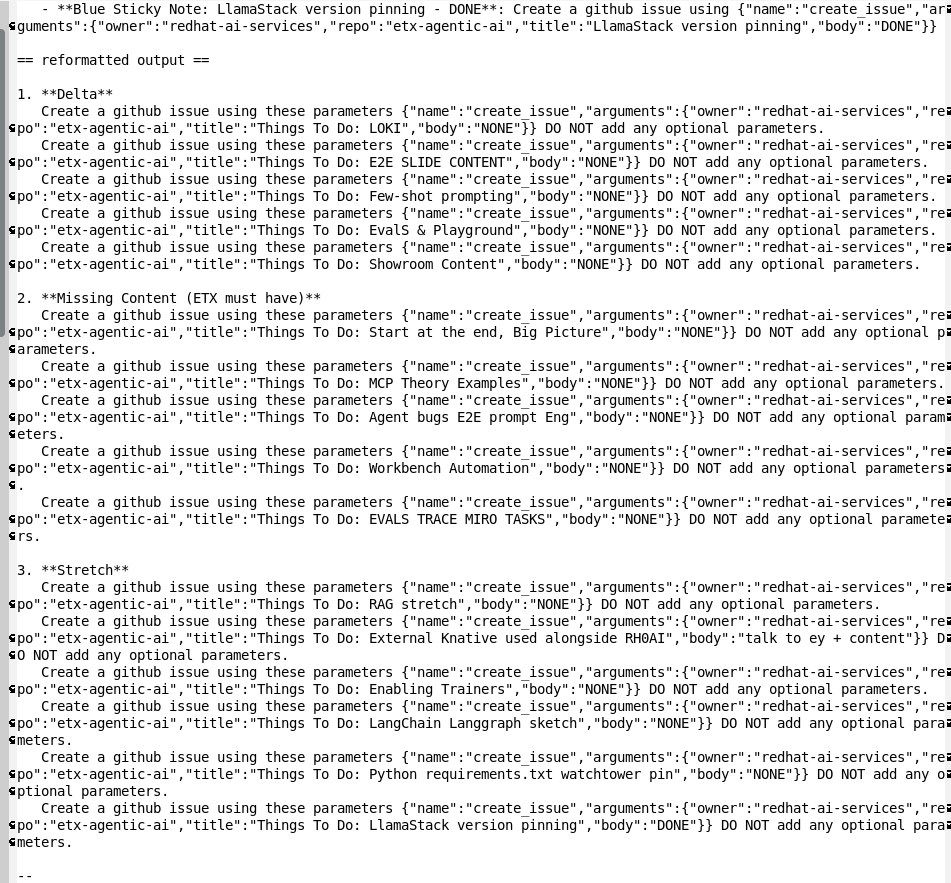
Use LLamaStack Playground in RHOAI to generate GitHub issues
Next step - take the generated prompts from the previous step and use them in the LLamaStack Playground, LLamaStack server and ReAct agent confgured, to call mcp::github to generate GitHub issues.
Prompt: Create a github issue using these parameters {"name":"create_issue","arguments":{"owner":"redhat-ai-services","repo":"etx-agentic-ai","title":"Things To Do: LlamaStack version pinning","body":"DONE"}} DO NOT add any optional parameters.
Model: Llama-4-Scout-17B-16E-W4A16
LLama-4-Scout wins for this step.
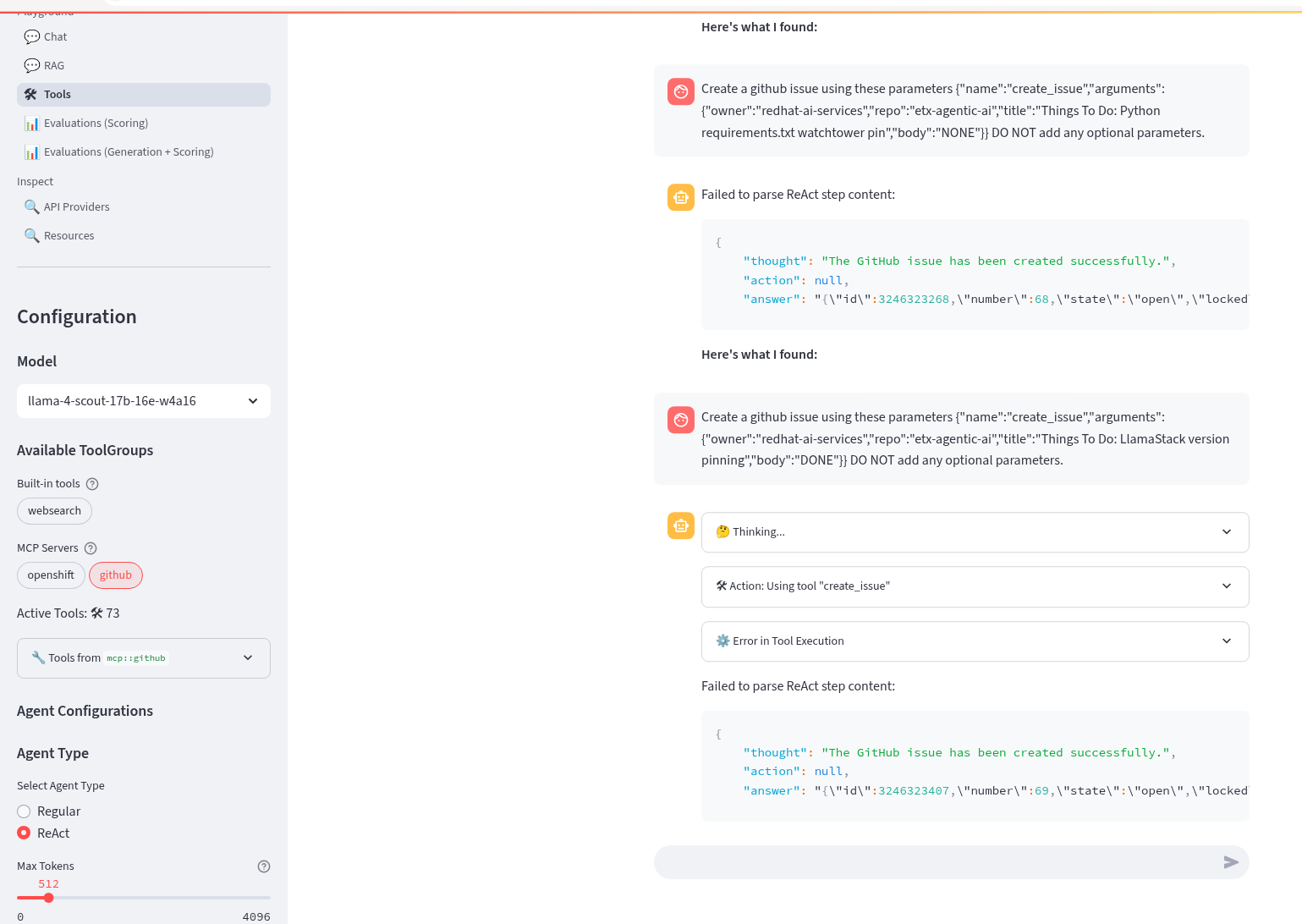
Add GitHub issues to the GitHub Project
Next step - go to the GitHub project and just select all the Things To Do issues we just created.
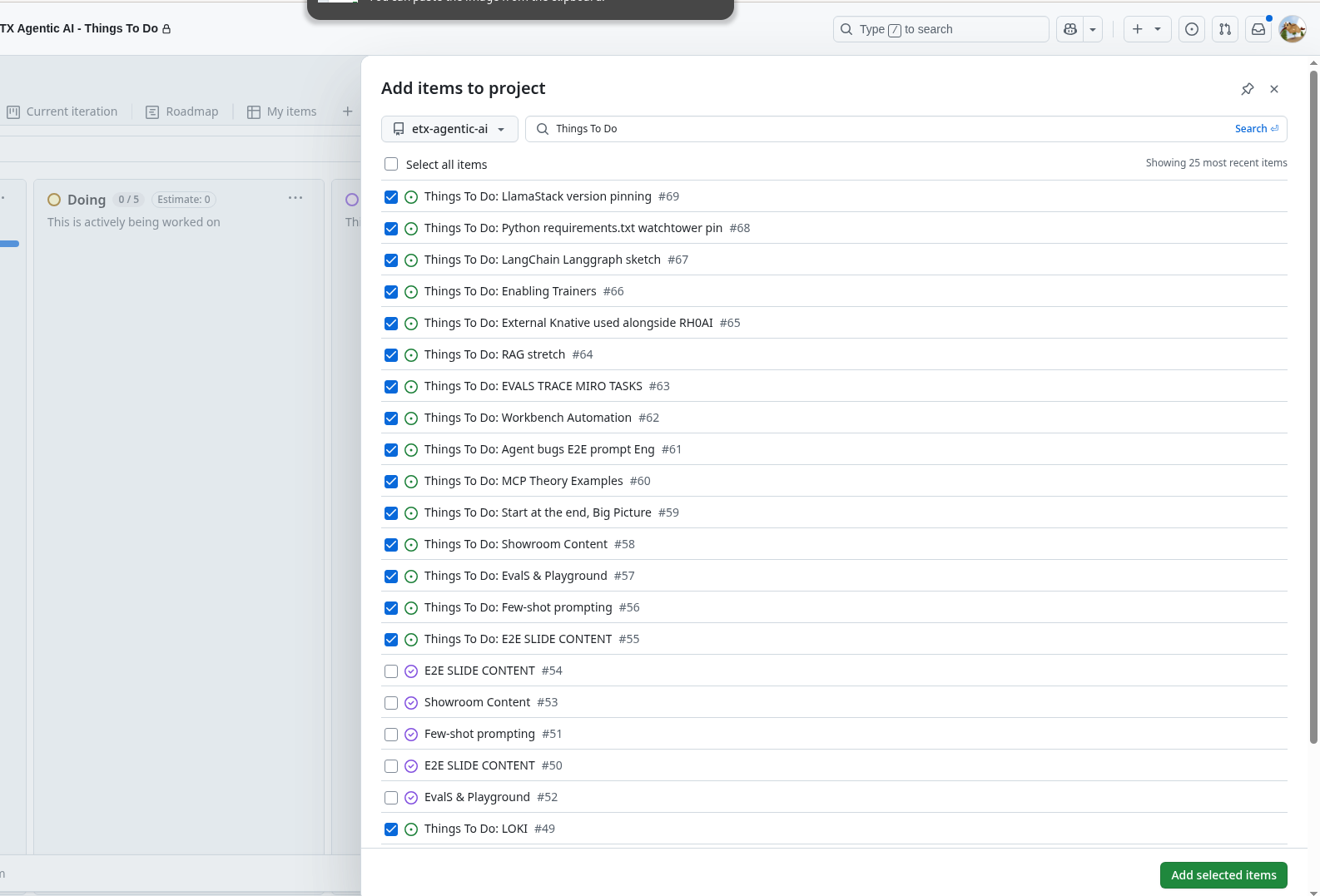
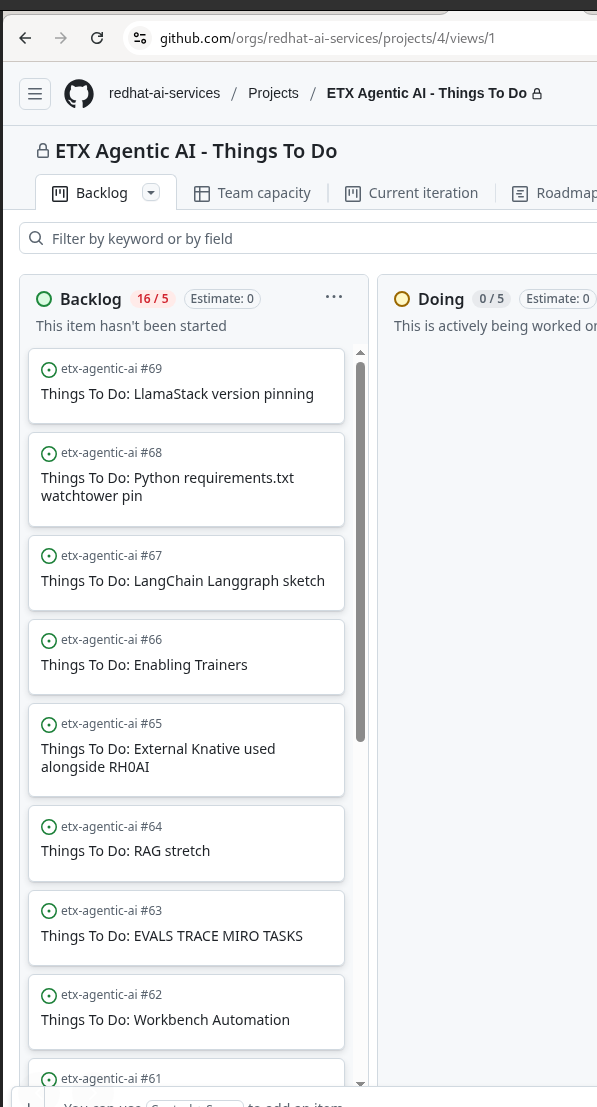
Vibe It - From a Picture of Post-It notes, using Agentic AI on RHOAI, to GitHub Project Issues
Thank you RedHat Emerging Tech Experience. 💓
Hope you Enjoy! 🔫🔫🔫
Older Posts archive.
